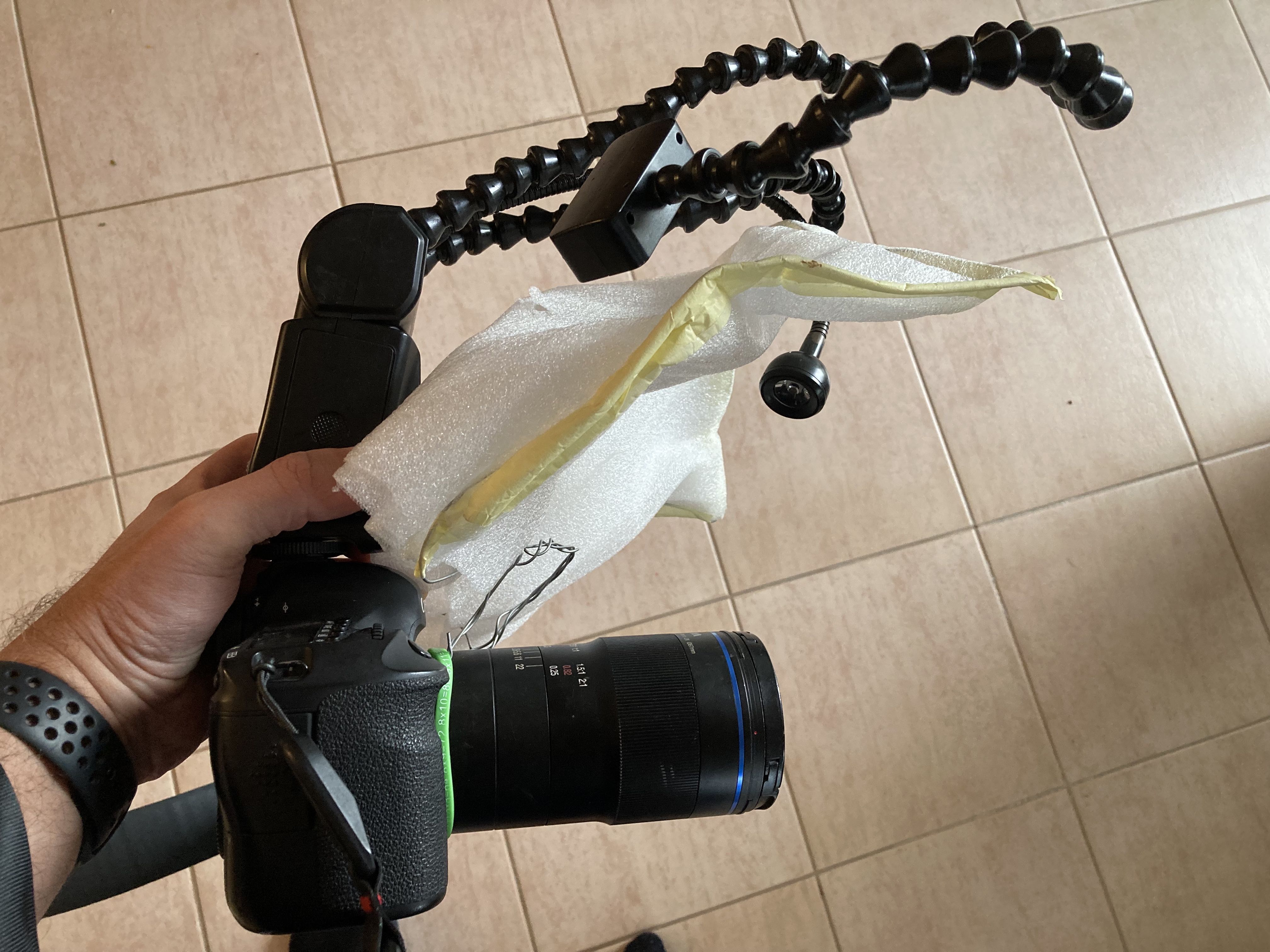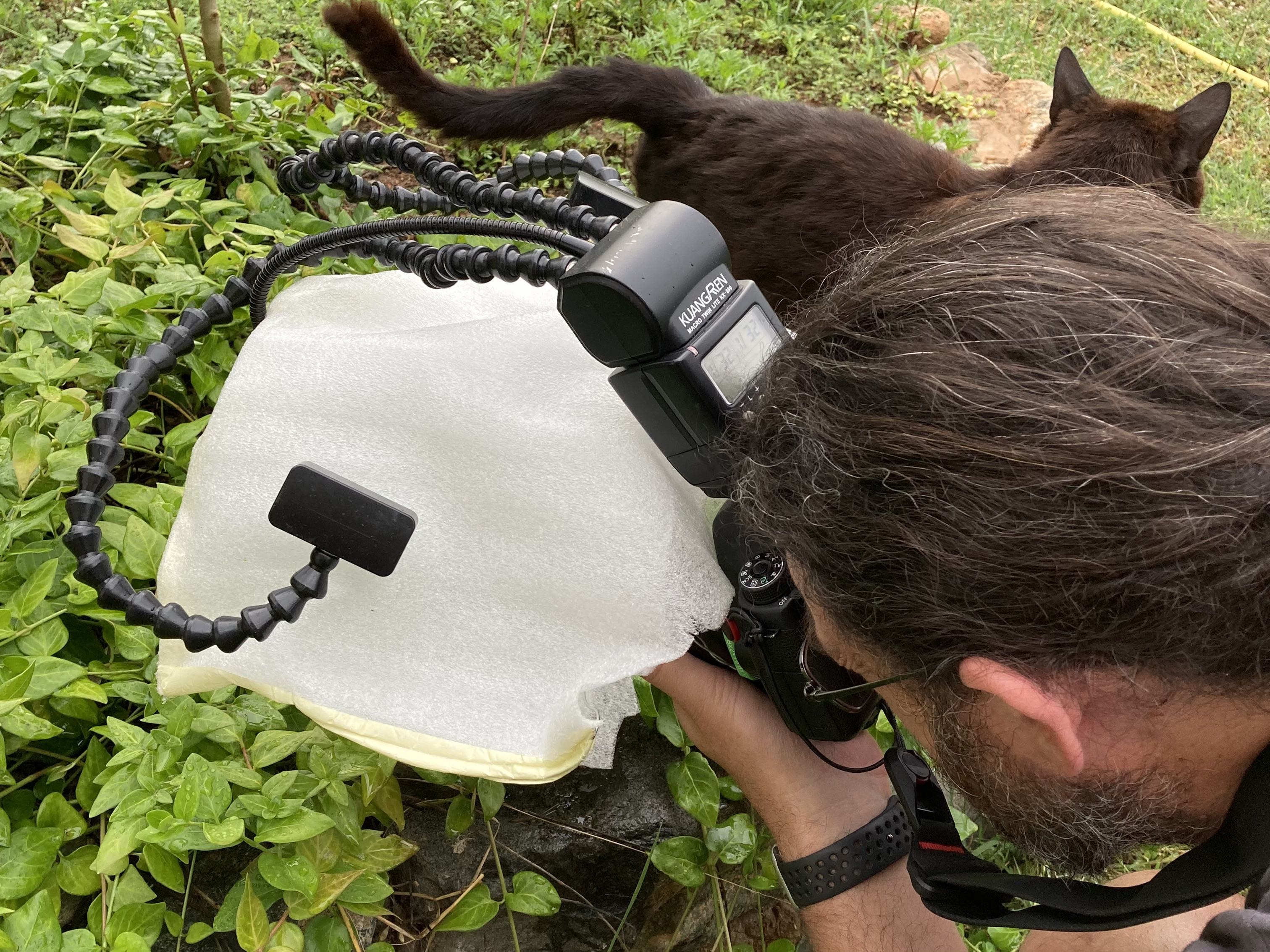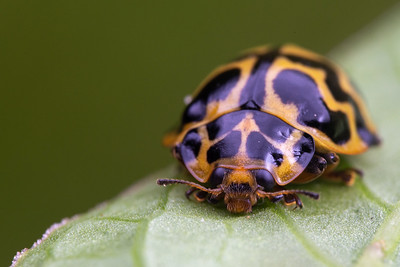My setup for macro photography
For a few years now I’ve been taking macro photographs of insects. Occasionally I get a good one, and people ask me what kit I use, or I want to answer someone on mastodon asking advice for getting started. So for both, that’s this post.
First a big of generic self-promotion. You can find my favourite shots on flickr. For example:
I generally post lower-res pics (including quick back-of-camera shots when I find something really exciting) on my bugs-as-in-insects mastodon account, @tikitu@flipping.rocks. (I have another account that’s more likely to feature bugs-as-in-software.)
Enough about me, how about you? Or, well, about my gear, which is still about me really. First up: you might want to dip your toes into macro photography without spending heaps of money on expensive kit.
Phone camera options
When I was just getting started, I spent a happy year or so without any camera equipment at all. Instead, I used my iPhone camera together with a small lens for the close focus that macro demands. A €15 hand lens works fine for seeing details of the insects around you, and for similar money you can get a lens kit designed to clip onto your phone. The image quality from these options isn’t great, especially away from the center of the image, but it’s a cheap way to test whether you really enjoy spending large amounts of time creeping closer and closer to a sitting insect, only to have it fly away just at the moment that you’re ready to take the shot.
I live in Greece, where the insect life is vivid and richly varied. I got good enough at creeping up on creepy-crawlies that I started wanting the photos I took to be more beautiful, as well as simply recording the species I came across. That gets a bit more expensive.
My camera kit
If you already have a camera, you can still ease into the macro world without going straight to a dedicated lens. A Raynox 150 or Raynox 250 clips onto the front of the lens you already have. I have both, and use them occasionally stacked on my macro lens, to get to frankly ludicrous magnification levels.
But mostly I’m using the Laowa 100mm f2.8 2x macro lens on a Canon EOS 6D body. The lens is manual focus, which isn’t too much of a hardship for handheld macro, as the detailed focus adjustment is anyway done by moving the entire camera closer and further away from the subject. (The Canon mount has camera-controlled aperture, which is important for being able to compose your shot wide open and have the lens narrow the aperture only as the shot is taken. Other mounts have fully manual aperture control, which I imagine might be something of a pain to work with.)
It took me about a year to add a flash to this setup, and when I did the difference was incredible. The challenge with macro is all about the narrow depth of field, and adding a flash let me narrow the aperture from f2.8 (where the depth of field is measured in fractions of a millimetre) to a comfortable f11.
I went with a rather expensive option, the KuangRen twin flash which puts the flash heads on long, flexible arms. An alternative that I see a lot of folks online using (especially people who shoot in burst mode and use focus stacking) uses a much more standard top-mount flash and a hood-shaped diffuser/reflector. The KR runs on four AA batteries, and is far too slow for shooting in burst mode.
I’ve cobbled together a diffuser from foam insulation sheet that you wrap around your lemon trees in winter to protect them from the frost. In previous versions I simply used printer paper. Both iterations are mounted with wire so I have a bit of control over the positioning, and brace against the flash above and the lens below. The whole setup looks a bit absurd, but it works reasonably well.


Some sources of inspiration
- Thomas Shahan (youtube, web) must have much much (much) steadier hands than I do. His reviews of the Laowa lens convinced me, back in the day. He’s particularly fond of saltacids (jumping spiders). His handheld style is what I aspire to.
- Nicky Bay (web) takes great shots, has amazing checklists and round-up posts, and has written up a lot of detail about his gear. He’s pretty hard-core though, his kit decisions are more to admire from a safe distance.
- Piotr Naskrecki (instagram) takes beautiful shots (perhaps you’re seeing a certain theme here?), some of which are collected in books (written both by him and by others).
- Alex Wild (mastodon, web) specialises in ants.
- Andreas Kay is no longer with us (he died in 2019). But his flickr account contains more than 30,000 photographs, many of them of truly extraordinary creatures and beautifully shot.
